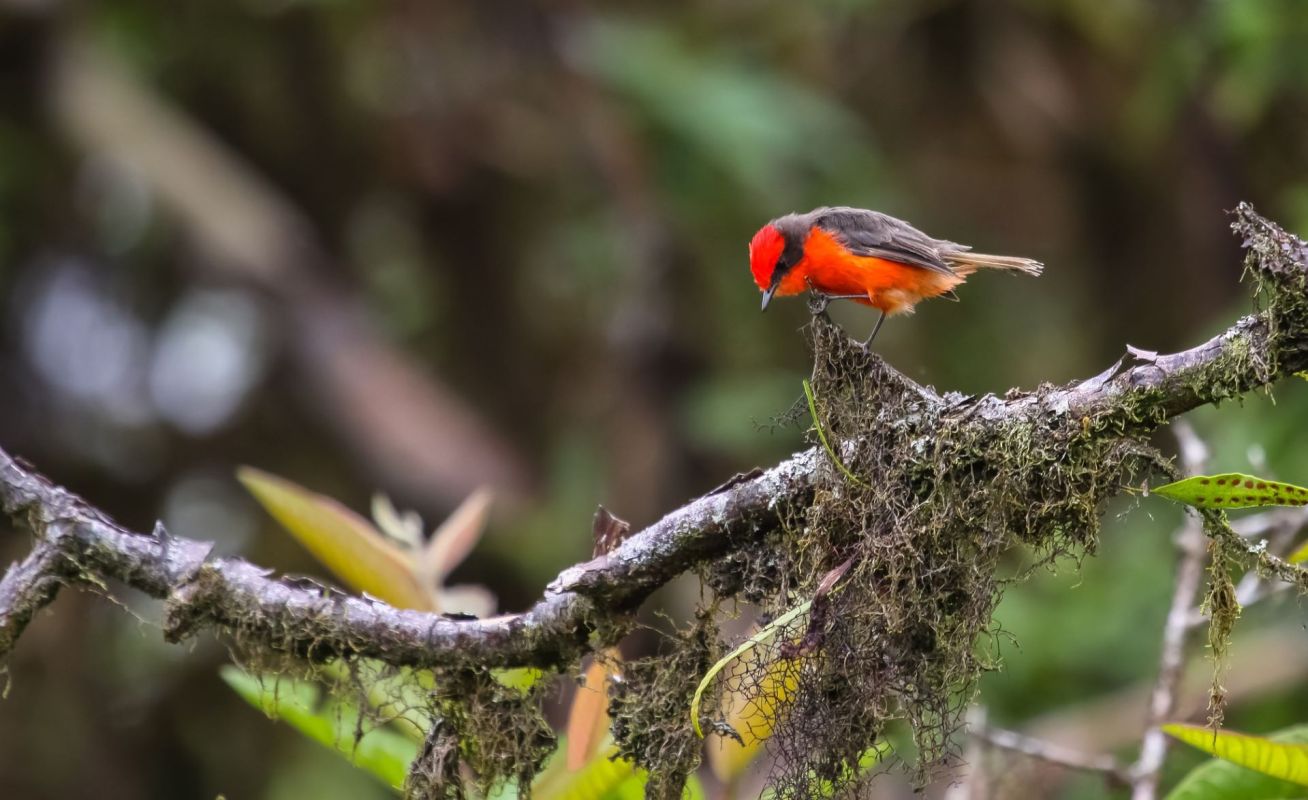The endangered Darwin's flycatchers have had a good year and may recover after being placed at the "edge of extinction," Euronews reports.
Darwin's flycatchers, also called little vermillion flycatchers for the bright red (with black) of the male plumage, are small birds from the Galápagos Islands, the isolated ecosystem where Charles Darwin famously developed his theory of evolution. Darwin was inspired by the unique wildlife of the islands, and this species of bird now bears his name.
Unfortunately, the scientist's namesake has been facing extinction. Invasive species introduced by humans have destroyed the delicate balance of the Galápagos Islands' habitat. There are only 15 breeding pairs of Darwin's flycatchers on the island of Santa Cruz, according to Euronews. There are also a few of the birds on nearby islands in the Galápagos.
This year, a miraculous 12 chicks have hatched on Santa Cruz, officials said — each representing another step away from the possibility of extinction.
This comeback is thanks to conservation efforts by the Charles Darwin Foundation, the University of Vienna, and the nonprofit Galápagos Conservancy, Euronews reports. Six one-hectare (about 2.5-acre) sites have been cleared of invasive species, like blackberries, to restore the birds' natural habitat.
Danny Rueda, the Galápagos national park's director, told Euronews, "These 12 new birds constitute a veritable success since initiating the program in 2018 and finally getting results." Rueda called each new chick born a "new hope to save this species."
Every conservation effort in the world helps to preserve biodiversity — the variety of different species living in an environment. As ClientEarth explains, biodiversity is vital for protecting the balance of our planet's ecosystems. Humanity relies on these natural ecosystems for clean water, breathable air, food, and even new medicines — so when an ecosystem becomes unstable, it's a problem for us, not just the wildlife.
Thanks to Rueda and conservationists, the Santa Cruz ecosystem is a little more stable, and one more vital species is on the mend. But conservation efforts will need to continue to protect this tiny population of birds, along with all the other threatened species in the world.
Join our free newsletter for cool news and cool tips that make it easy to help yourself while helping the planet.









